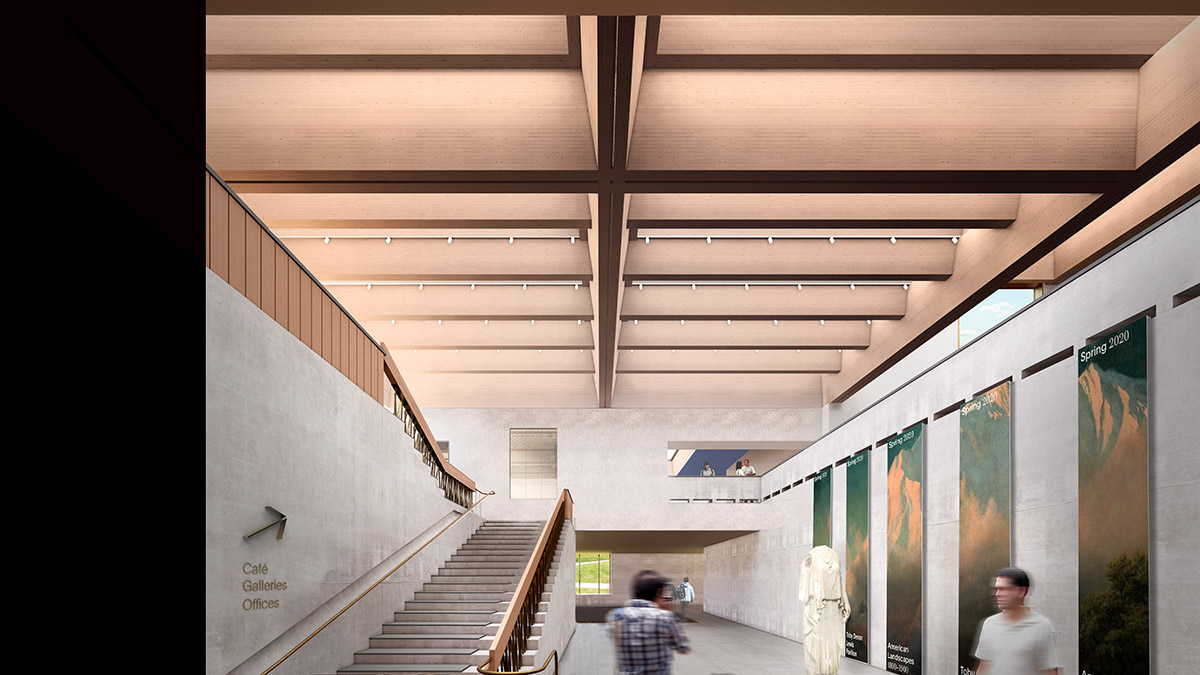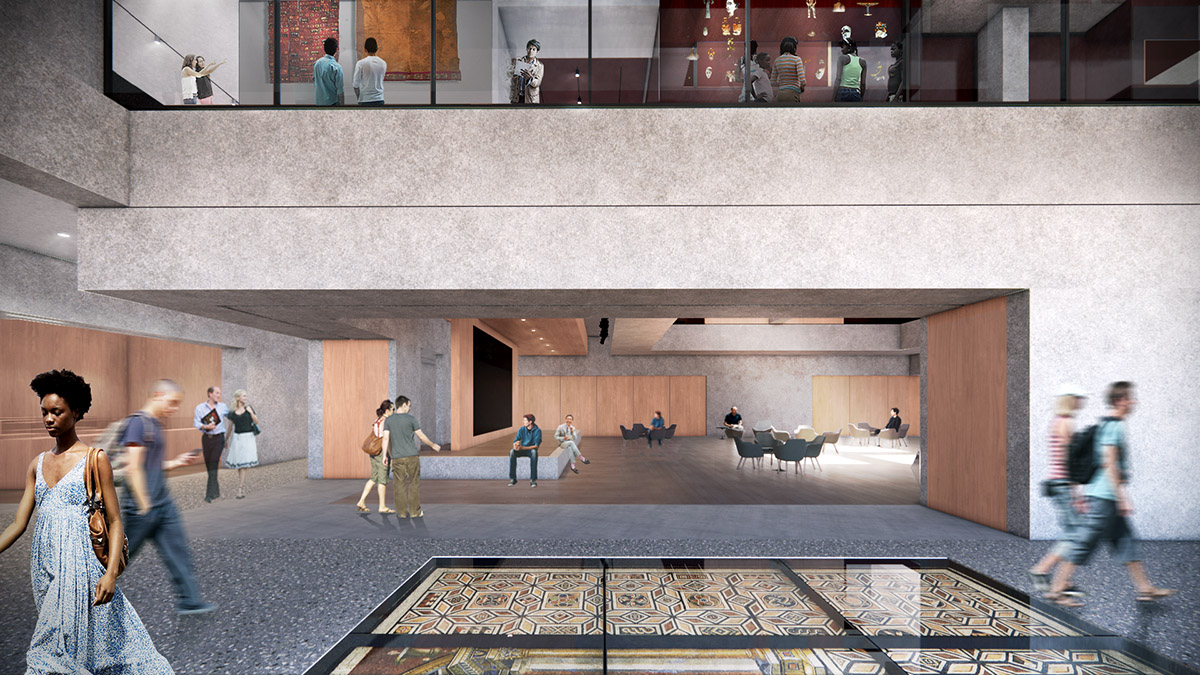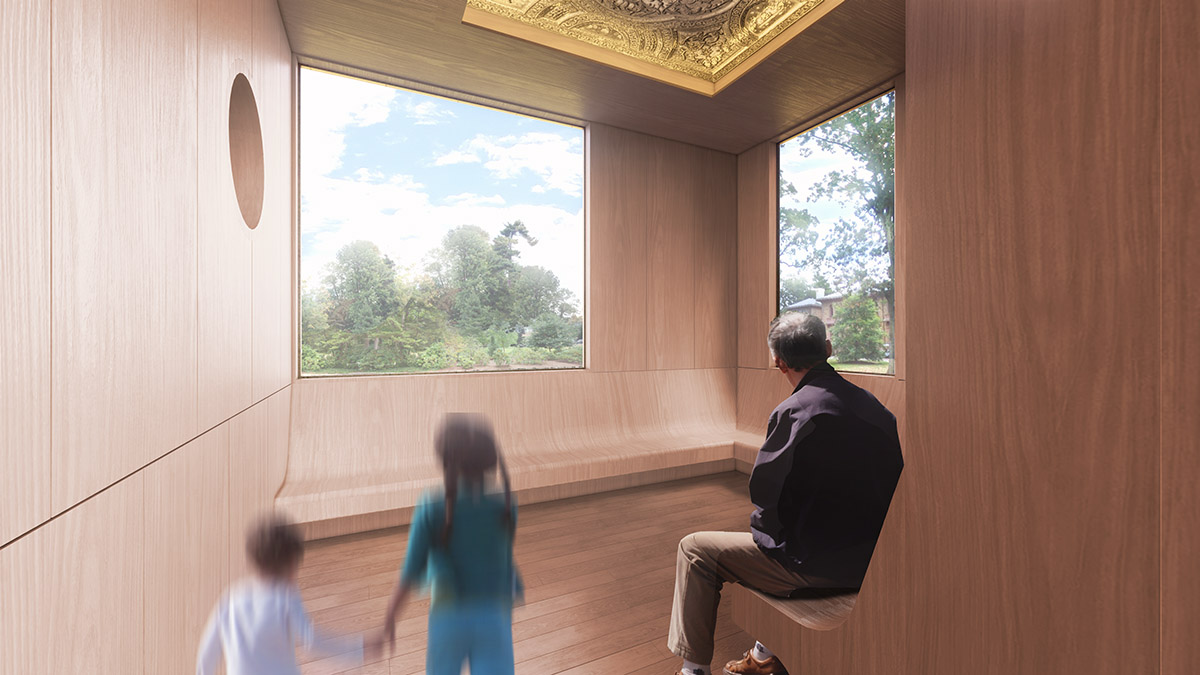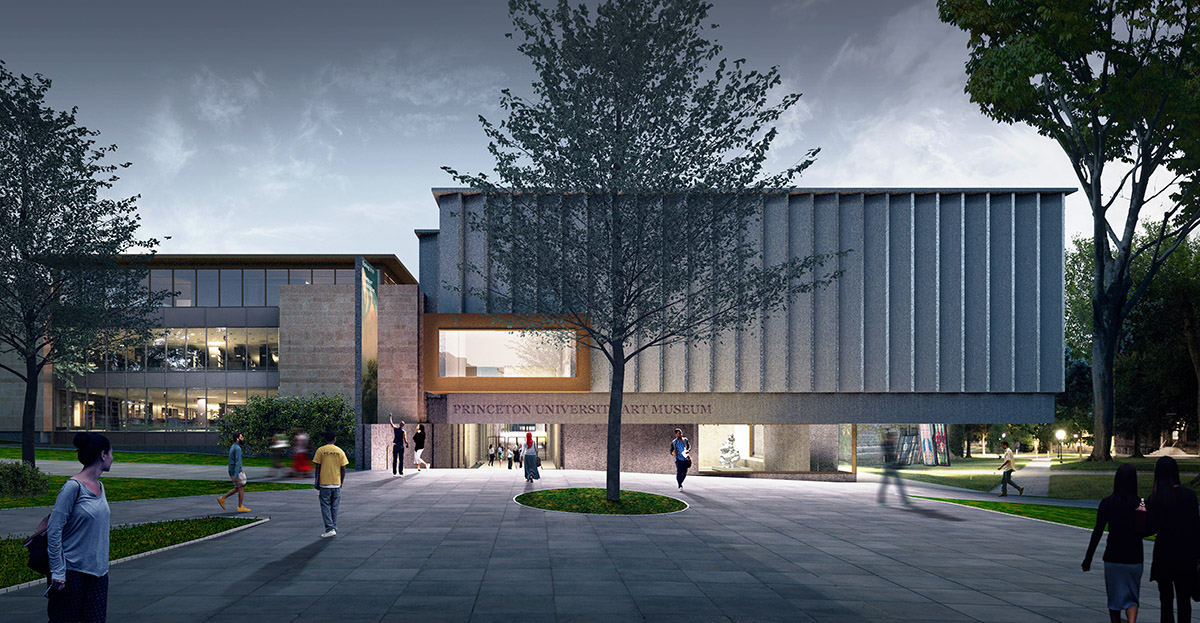Submitted by WA Contents
Adjaye Associates unveils plans for new Princeton University Art Museum at University campus
United States Architecture News - Sep 29, 2020 - 12:10 3786 views

Sir David Adjaye's firm Adjaye Associates and the Princeton University Art Museum have unveiled plans for the Museum’s new building in the heart of the Princeton University campus in New Jersey.
The new plans will embody flexibility, openness and connectivity to break down barriers to participation and invite entry by all. According to a press release, Sir David Adjaye, the design architect and founder of Adjaye Associates, presented the designs with James Steward, the Museum’s Nancy A. Nasher–David J. Haemisegger, Class of 1976, director.
For design, Sir David Adjaye is inspired by "the rich history of the surrounding environment" and reflects it with "bold and inclusive vision".

The new Museum complex as seen from the southwest corner, with Dod Hall to the left; the outdoor terraces here will accommodate up to 2,000 people.
The statement said: "The building will replace and roughly double the square footage of the existing facility, which occupies a central location on Princeton’s campus."
The design employs a mix of traditional materials – including stone, bronze and glass – that speaks both to the present moment and the historic Princeton context. Construction on the project is slated to begin in 2021 with an anticipated opening in late 2024.
At a time of national self-reflection for both museums and universities, the design embodies the Museum’s long-standing commitment to serve as a hub and a gathering place, a nexus for the arts and humanities – a metaphor for the college campus at its best – that affords encounters with cultures past and present from around the world and seeks to foster stronger citizenship among its University, local and global communities.

Four pavilions located at each corner of the new complex will feature expansive 18-foot-high ceilings, daylighting, hardwood floors, and a Glulam ceiling system that integrates many of the space’s systems.
"The new building design overcomes multiple historic barriers to participation, making the visual arts an essential part of the University experience for all Princeton students and an accessible home of democratic engagement for community members and visitors," said a statement.
"The reconstruction of the Princeton University Art Museum is conceived as a campus within the campus," said Adjaye.
"A space of genuine inquiry where the exhibition of diverse practices, learning as a synthesis of knowledge and cross-cultural connections weave together into a singular experience that encompasses a multiplicity of ideas and peoples," he added.

The Entrance Hall and Grand Stair provide welcome and access to the second and third floors.
The new museum will occupy three stories, featuring seven primary interlocked pavilions containing many of the building’s new galleries, interspersed with more intimate spaces that break down the scale of the whole while knitting the elements of the new building into the campus landscape.
The exterior of the building is characterized by alternating rough and polished stone surfaces inspired by the rich history of the surrounding environment. With a pulsating rhythm that responds to the delicate forms of nearby buildings and with the “push-pull” of its undulating facades, the new facility will welcome visitors from all directions through a design that strives to be “all fronts and no backs.”

A walk along the north-south “art walk” provides views into the Grand Hall, as well as encounters with works of art embedded in the floors and glimpses into the galleries above.
The design of the new building will house the Museum’s globe-spanning collections to be exhibited substantially on a single level, shaping new ways of encountering the collections, privileging ideas of cultural contact and exchange and fostering new modes of storytelling.
By challenging the traditional hierarchies inherent in multilevel gallery display, the Museum will foster moments of discovery and surprise as visitors encounter ideas and objects in ways that move beyond the boundaries of geography and chronology.

The double-height Grand Hall sits at the heart of the Museum complex and will function as a lecture hall and performance space and will host many of the Museum’s larger events.
"This approach brings architecture and curatorial practice together in a manner that is rare among major cultural institutions," added a statement.
"Galleries will alternate in volume to accommodate the Museum’s richly varied collections and to combat visitor fatigue, while elements of visible storage will feature significantly throughout the Museum building, allowing curators to vary the density of display and create moments ideally suited for scholars as well as for general visitors."

A singular “lens” moment at the complex’s northeast corner creates an intimate viewing and reading room, affords views onto the campus, and shapes a display opportunity for unique works from the collections.
Adjaye Associates designs numerous bronze and glass “lenses” that are positioned between the pavilions to break up the scale of the complex and to shape framed glimpses into the Museum and extraordinary vistas out onto the beautiful Princeton campus.
"The design includes outdoor terraces that diminish borders between indoors and out, including spaces for performances and events that can accommodate 200 to 2,000 users," added in a project description.
A Grand Hall for lectures, performances and events; numerous classroom spaces and two “creativity labs”; and a rooftop café will serve University audiences, adults and K to 12 students.
As an investment in the architecture of our time, the new building will join nearly 30 architectural styles reflected on Princeton’s campus.
The design inserts itself dynamically into campus life by maintaining key pedestrian pathways that flow into and through the Museum via two “art walks” – thoroughfares that function as the new building’s circulatory spine.
At the ground level, permeability and accessibility are prioritized while affording tantalizing and uplifting glimpses into the galleries, most of which will be located on the building’s second level, even during times of day when the galleries might be closed.
The decision to build the new Museum at the historic site of the current facility intentionally positions the Museum at the physical heart of the campus, and keeps it physically adjacent to the University’s Department of Art and Archaeology and to Marquand Library, as an important research center for the humanities.

The future Main Entrance to the Art Museum, with a signature “lens” moment above, spilling light onto the terrace below.
"The brilliant design for the new Princeton University Art Museum meaningfully achieves our goals of placing art at the core of the campus experience, strengthening the University’s mission of teaching and research and serving as a welcoming gateway for all visitors to this storied campus," said Princeton University President Christopher Eisgruber.
Adjaye Associates was selected as the project architect in September 2018, in collaboration with Cooper Robertson as the project’s executive architect.
Since work on the project began, the Museum, Adjaye Associates and Cooper Robertson have been united in the belief that great architecture can offer solace and grace and be a source of collective memory and communal experience.
All images © Adjaye Associates
> via Adjaye Associates
